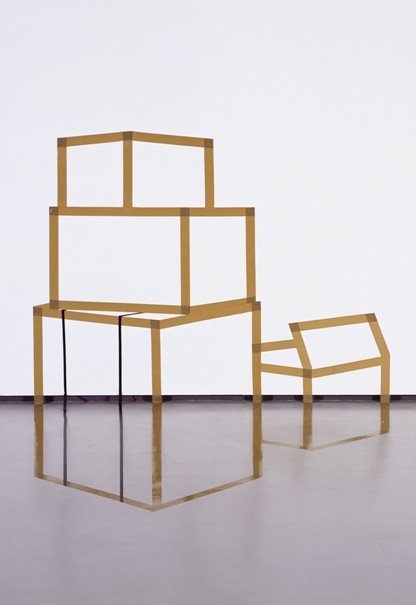Igor Eskinja
dal 19/6/2007 al 27/7/2007
Segnalato da
19/6/2007
Igor Eskinja
Krobath Wimmer, Wien
Solo show

Igor Eskinja inclines towards a trend of visual art
creators that follow a principle of minimalism and
scantiness in their choice of materials and
expression. His own works are characterized by the
perfection of production. Since the end of the 1990s,
and in various exhibition spaces, Eskinja has been
authoring installations that were of temporary
character. Minimally intervening by reduced means
upon the wall or the gallery floor (applications made of
adhesive tape, wall papers, stickers, dust...) he
created spatial installations which lasted for as long
as the actual exhibition. By using expendable
materials and by temporariness of the exhibitions, he
demystifies the status of the institutional space and
attaches bigger importance to the process of the
observer's perception, rather than to the existence of a
permanent art object.
A figurative flat depiction has been conceived in order
to problematize spatial relations, while activation of
the observer's perception within a given and real
space opens up a certain new spatial situation, a
space within the space. The observer is demanded to
visually read i.e. to locate, discern and decipher the
data gained in a process of visual perception and
reflection i.e. active relation.
Eskinja's interest is not exclusively focused on the
problems of visual form, perception, spatial and
symbolic redefining of the gallery space, but also on
problematizing the complex communication relations
within art world. In this manner he questions, often
with a bit of irony, the intricate relations arising from
the interaction between observer/consumer and
artwork, the manners of artwork presentation and the
meaning of gallery space's functioning.
Inside the exhibition space, he carefully creates a two-
dimensional installation of an object, a sort of which
can be found around us on everyday basis (boxes,
waiting-rooms seats, a microphone, folders from a
commuter screen...). A two-dimensional image
(thanks to reflection and the outstanding knowledge of
the laws of perception) is construed in such a way that
an observer perceives it as the three-dimensional
object. The next stage comprises photographing the
object, after which the artist applies a state-of-the-art
technology to produce a photo, subsequently placed
beneath plexiglas. Eventually he exhibits the final
product, a perfectly balanced art object which - to the
observer's eye - constantly provokes a tension
between charms of illusion, polysemy and simplicity.
Actually, thanks to a skill of sophisticated perception,
the observer will reveal and recognize artwork's
multidimensionality. A possibility of arising of a
communication relation between observer and
artwork necessarily presumes the former's active
participation.
Producing the work that has a character of durability
can be interpreted as a progress in direction of
surpassing the gallery space. This process can be
regarded as the author's peculiar liberation from the
givens and frameworks of an institutional space, and
as a new phase of creation, moving into a new realm
of the open possibilities.
Natasa Ivanèeviae
Galerie Krobath Wimmer
Eschenbachgasse 9 A - 1010 Wien
Opening hours:
Tue. - Fri. 1 - 6 p.m., Sat. 11 a.m. - 3 p.m. and by appointment



